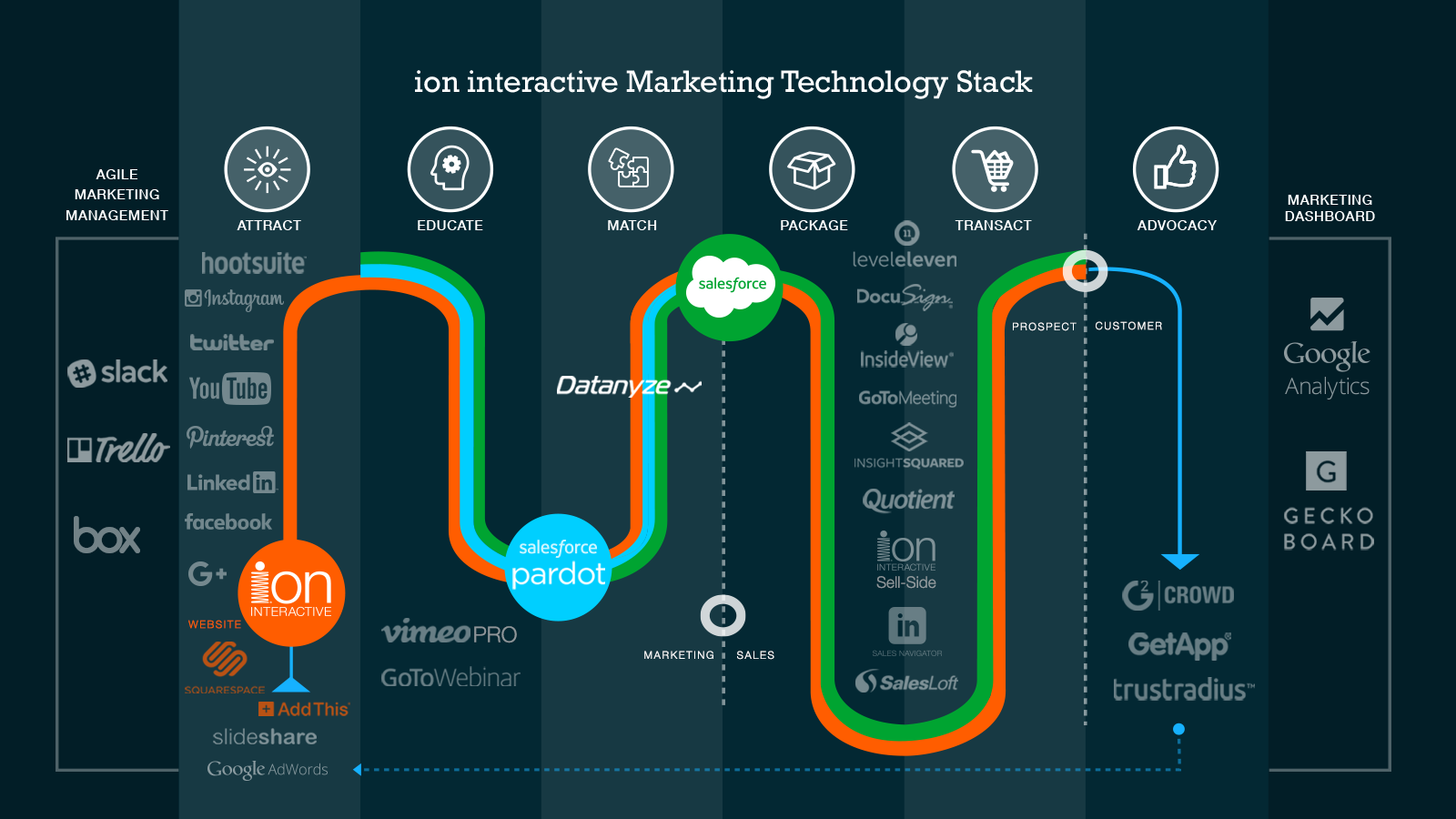- Five of the top marketing technology platforms are Oracle, Adobe, Google, Salesforce, and SAS.
- The average retail/eCommerce marketer uses 16 marketing platforms.
OVERVIEW
We have provided a list of five of the top marketing technology platforms. They are Oracle, Adobe, Google, Salesforce, and SAS.
An extensive search on the websites of the platforms, their social media accounts, press releases, and research sites such as Gartner, Capterra, G2 Crowd, and Forbes did not yield the number of users of the platforms.
In the absence of number of users for the platforms, we used leaders in Gartner’s Magic Quadrant for Digital Marketing Hubs and Digital Marke ting Analytics, as well as number of site visitors by SimilarWeb to determine of the top platforms. They all have more than 4 million site visitors as of June 2018.
ORACLE
Oracle Marketing Cloud is used by B2B and B2C marketers. It is an integrated set of best-in-class applications, to boost sales and strengthen customer and brand loyalty. Oracle Marketing Cloud provides rich datasets and very adaptive intelligence for marketers to deliver irresistible, consistent, and connected experiences to their clients.
Oracle Marketing Cloud covers the entire marketing lifecycle, from reaching out to prospects, converting them into customers, and then retaining and improving customer relationships. As an integrated part of Oracle’s CX suite, Oracle Marketing Cloud offers an integrated customer experience beyond the organizational confines of traditional marketing into sales, service, ecommerce, and loyalty.
ADOBE
Adobe Analytics ensures that the marketing insights of its customers are not limited to particular channels. Adobe Analytics collects and processes data from both online and offline channels so that behaviors can be analyzed across the entire customer journey. Using machine learning and report automation tools, it provides insights that are easy to visualize, analyze, share, and act on.
Google Analytics provides the digital analytics tools needed to analyze data in one place from all touchpoints, to give a deeper understanding of the customer experience.
It helps users to understand their site and app users and better evaluate the performance of their content, products, and more. Google has 42.46 billion site visitors as of June 2018.
SALESFORCE
Salesforce Marketing Cloud provides a unified marketing platform to know consumers, engage them, and personalize their experience across every device. It Integrates every experience and touchpoint with the user’s brand across advertising, marketing, ecommerce, sales, service, and apps.
Distributed Marketing from Salesforce makes it easy for brands to deliver coherent experiences across partner networks and corporate marketing. Salesforce has 75.55 million site visitors as of June 2018.
SAS
SAS Customer Intelligence uses data, analytics and insights on customers and prospects to produce relevant, personalized experience in real time. SAS provides a unified, deep, broad, and open analytics platform to help users to engage with customers, at any time.
SAS implements more sophisticated analytics like machine learning and predictive analytics to acquire insights from data, understand customer preferences and boost marketing. It identifies, tracks, serves and retains customers, even if they’re using multiple devices. SAS has 4.16 million site visitors as of June 2018.
NUMBER OF MARKETING PLATFORMS USED BY THE AVERAGE RETAIL/ECOMMERCE MARKETER
There are 6,829 marketing technology platforms in 2018 from 6,242 unique marketing technology companies. The average ecommerce business uses 16 marketing platforms. Larger organizations use up to 98 platforms. This includes marketing automation platform (MAP), customer relationship management (CRM), content management system (CMS), and various forms of advertising, data management, reporting and analytics platforms.
CONCLUSION
Oracle, Adobe, Google, Salesforce, and SAS are five of the top marketing technology platforms. The average ecommerce marketer uses 16 marketing platforms.

